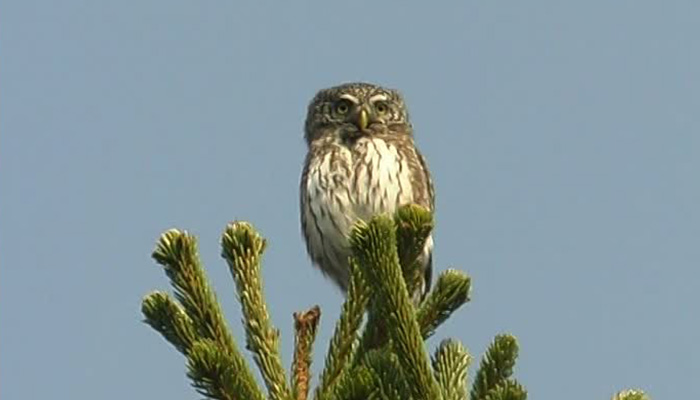
English: Eurasian Pygmy Owl
Russian: Воробьиный сыч
Mongolian: Буслаг сүлиг, Дорнодын бүгээхэй
German: Sperlingskauz
French: Chevechette d’Europe
Japanese: スズメフクロウ (Suzume-fukuro)
Body length: 15-19 cm
Wing span: 32-39 cm
Breeds
in coniferous or mixed forests in boreal zone or in C European mountains, with
a preference for mature spruce or fir forests. Mainly sedentary. Crepuscular
habits (night vision poor in complete darkness). Rather fearless, and can
sometimes be attracted by imitation of song. Food birds, voles; very bold for
its size, and capable of killing thrushes (which are larger). Stores food
supply in holes. Nests in hole in a tree (often old nest of Great Spotted
Woodpecker)
Identification: Very small
(Starling size), round-headed (vestigial ear-tufts rarely seen). Head is
proportionately smaller than on Little and Tengmalm’s Owls. Flight dashing,
over longer distance obviously bounding (in woodpecker fashion). Perches in
spruce tops. At times waves tail or raises it slowly in flycatcher fashion.
Facial discs poorly developed but short, narrow white supercilia prominent, and
yellow eyes small and closely set, giving ‘stern’expression. Lower hind-neck
has diffuse light pattern creating suggestion of ‘false face’ (for defence
purpose). Grey-brown above, speckled with tiny white dots; whitish below, with
brown breast (more extensive on sides) and thinly streaked belly. Juvenile:
Very similar to adult, but lacks white spotting on crown, back and
wing-coverts.